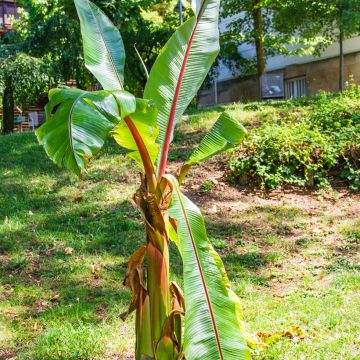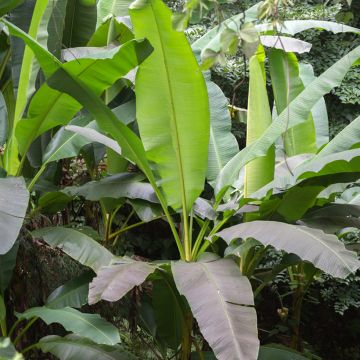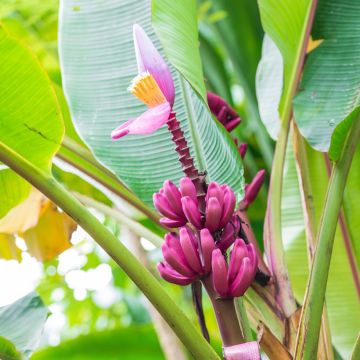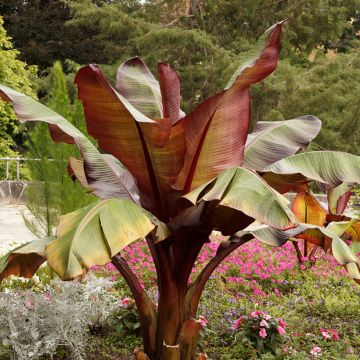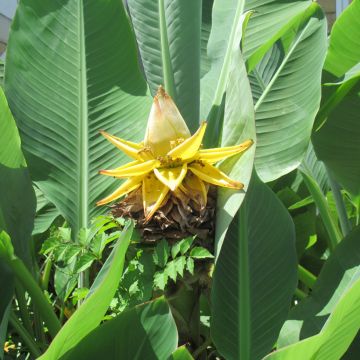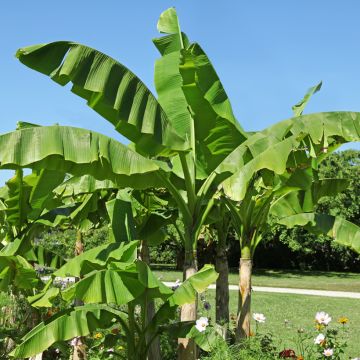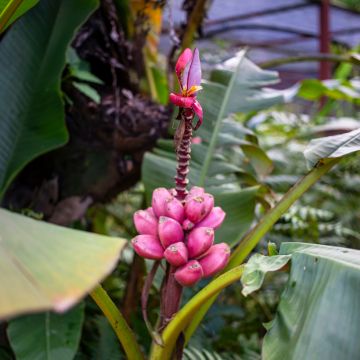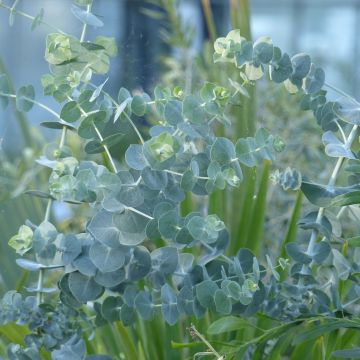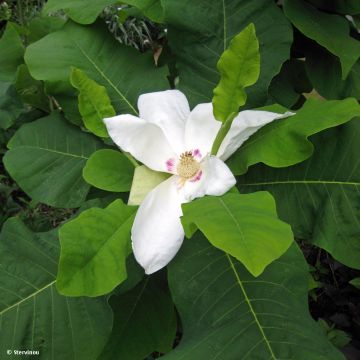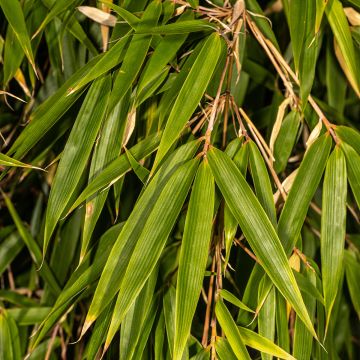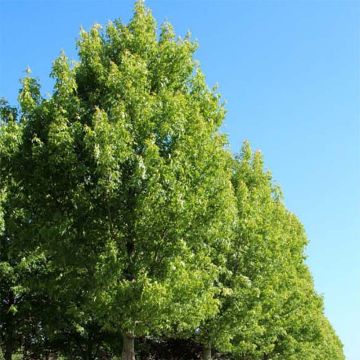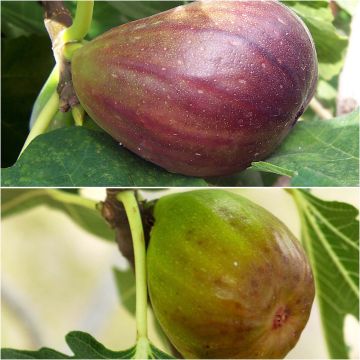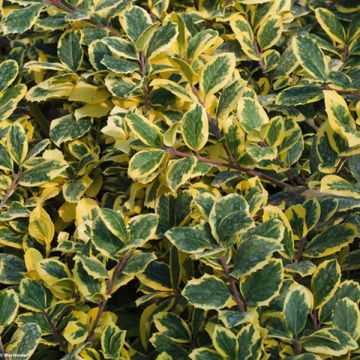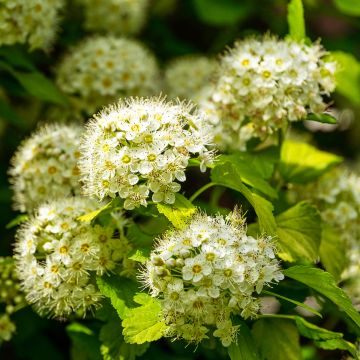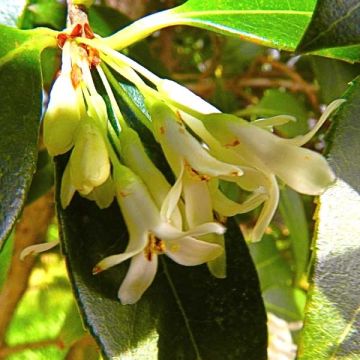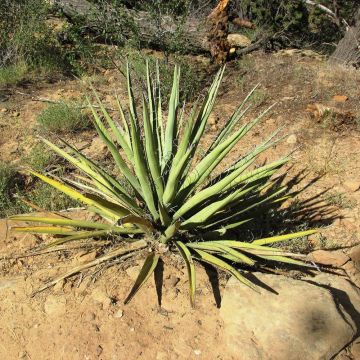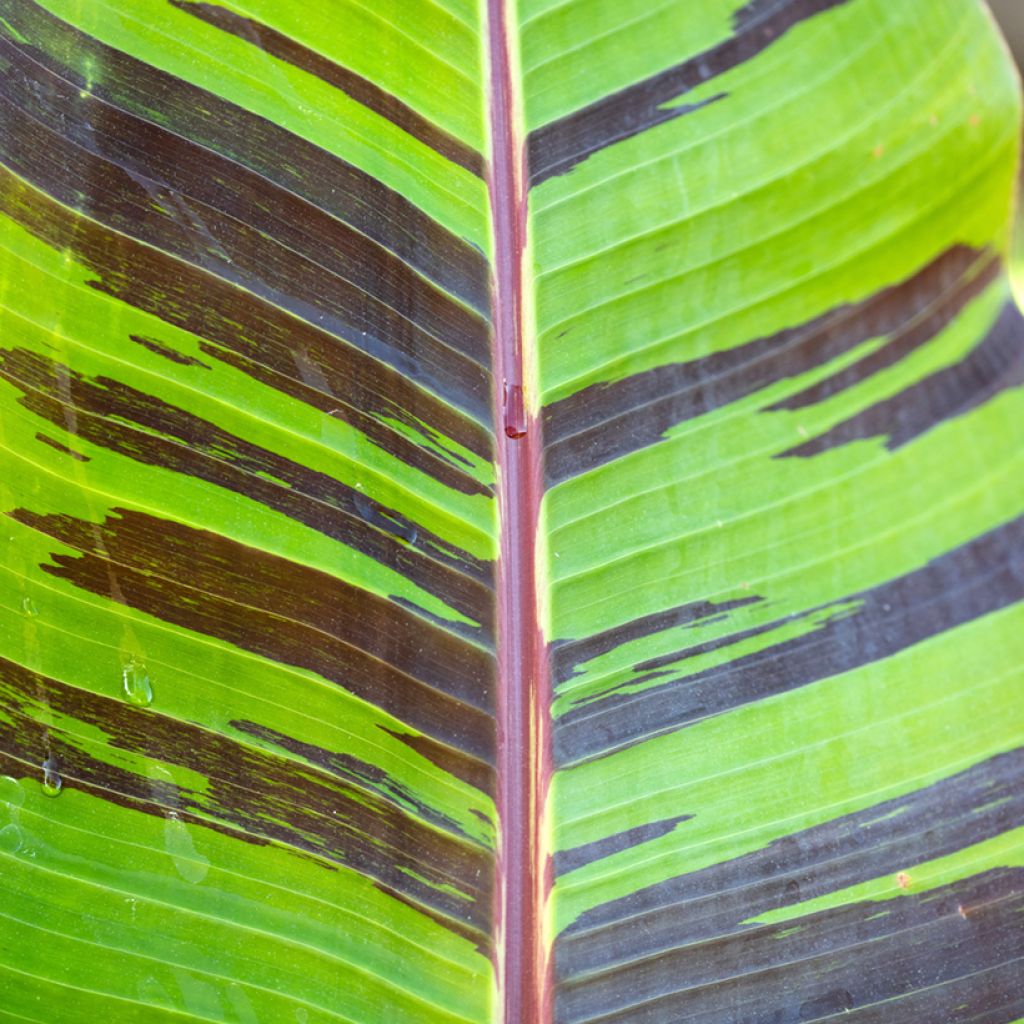

Musa sikkimensis Red Tiger - Hardy Banana
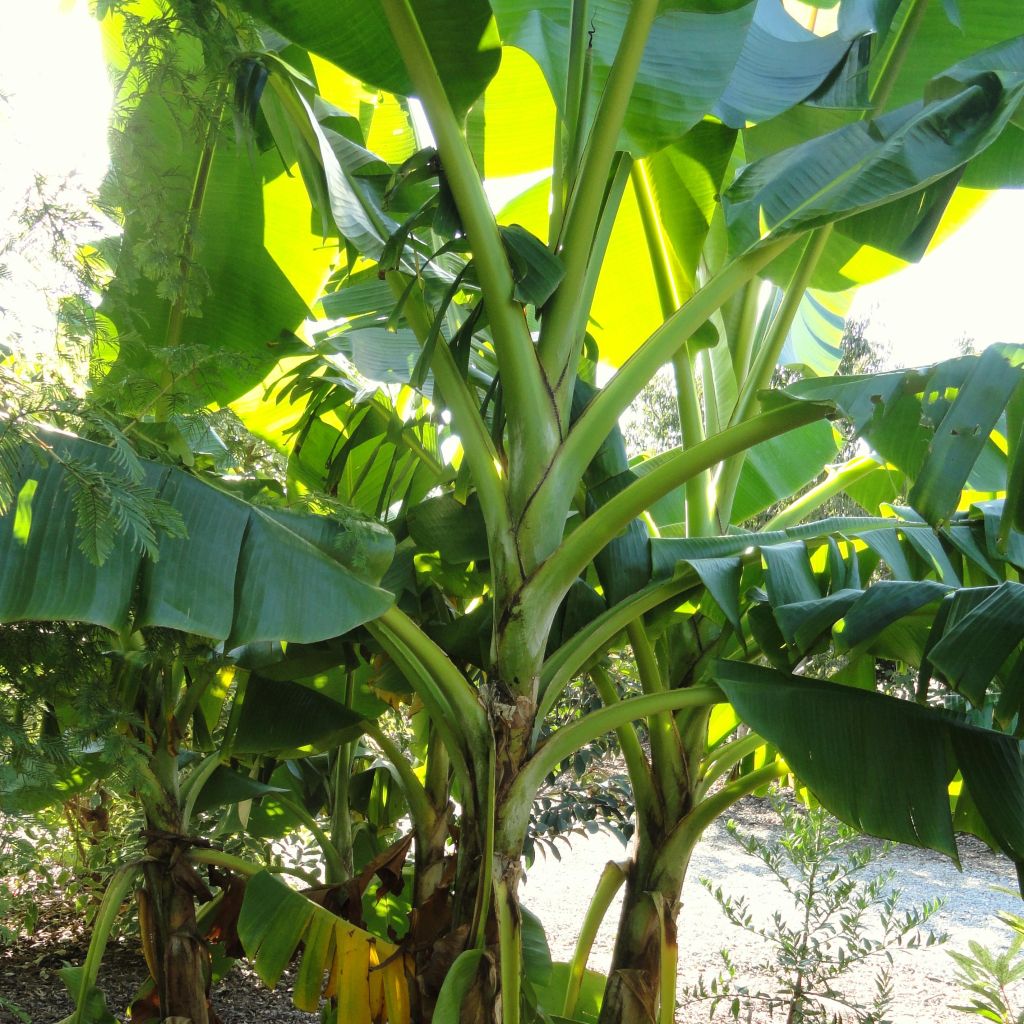

Musa sikkimensis Red Tiger - Hardy Banana
Musa sikkimensis Red Tiger - Hardy Banana
Musa sikkimensis Red Tiger
Darjeeling Banana, Sikkim Banana, Himalayan Banana Tree
The banana plant arrived with several leaves very damaged. I planted it taking into account your instructions. A new leaf has developed since then. It is thriving in this spot.
Dan, 06/09/2024
This item cannot be shipped to the selected country
Delivery charge from €5.90
More information
Schedule delivery date,
and select date in basket
This plant carries a 24 months recovery warranty
More information
We guarantee the quality of our plants for a full growing cycle, and will replace at our expense any plant that fails to recover under normal climatic and planting conditions.
From €5.90 for pickup delivery and €6.90 for home delivery
Express home delivery from €8.90.

Does this plant fit my garden?
Set up your Plantfit profile →
Description
The Musa sikkimensis Red Tiger, also known as the Sikkim Banana Tree, is a variety derived from a relatively hardy banana tree, native to the forests of the Himalayas, whose base can withstand short periods of frost, down to -12°C (10.4 °F). It produces large leaves, initially bright green, with the lamina turning purple on the underside, as well as dark red stripes and streaks on the top. These leaves are fairly resistant to wind, better than those of the Musa basjoo. Its tropical appearance, reasonable size, and ease of cultivation in fertile and moist soil allow it to be grown in many gardens, even those of modest size.
The Sikkim Banana Tree, also known as Musa hookeri, or Darjeeling Banana Tree, is a giant herbaceous perennial, with a tuberous rhizome, belonging to the Musaceae family. It grows in the forests of the Himalayas, at altitudes of around 1700 m (5577 ft 5 in), sometimes up to 2000 m (6561 ft 8 in).
The 'Red Tiger' plant, also called 'Manipur', is an annual plant that dies after producing fruit. It grows new trunks from buds carried by the rhizome every year. The plant has a green pseudo-trunk (stipe) made up of petioles of the leaves. The leaves are light green with purple undersides and can have burgundy-purple streaks on top and measure a maximum of 1.50m (4ft 11 in) in length. They spread out in a fan shape, forming a beautiful clump 2 to 4 m (6 ft 7 in - 13 ft 1 in) tall and 1 to 3 m (3 ft 4 in - 9 ft 10 in) wide.
In warm climates, the plant produces yellow to cream flowers in summer, surrounded by pink bracts. In warm regions, the plant also produces fruit with a sweetish but hard pulp that resembles bananas but has no taste interest. The leaves disappear with the first frost in winter, but the plant will resprout from the base in spring. The plant is quite hardy and can withstand temperatures as low as -12°C for well-established specimens. However, younger specimens should be protected from severe frost.
The Red Tiger Himalayan Banana Tree is not commonly found in gardens, but it can be used in a variety of ways. It can be planted in a group, alone, or in a large pot on a terrace or conservatory. If planted in a pot, it is vital to ensure proper watering and protection in winter. This unique plant, along with cannas, tetrapanax papyrifers, bamboo, giant miscanthus, and castor oil plants, adds an exotic feel to temperate gardens. Banana trees become dormant during winter, like perennial plants, causing their above-ground parts to dry out and die. During the winter season, our team prunes these plants to the ground to encourage better growth in the spring.
Report an error about the product description
Musa sikkimensis Red Tiger - Hardy Banana in pictures
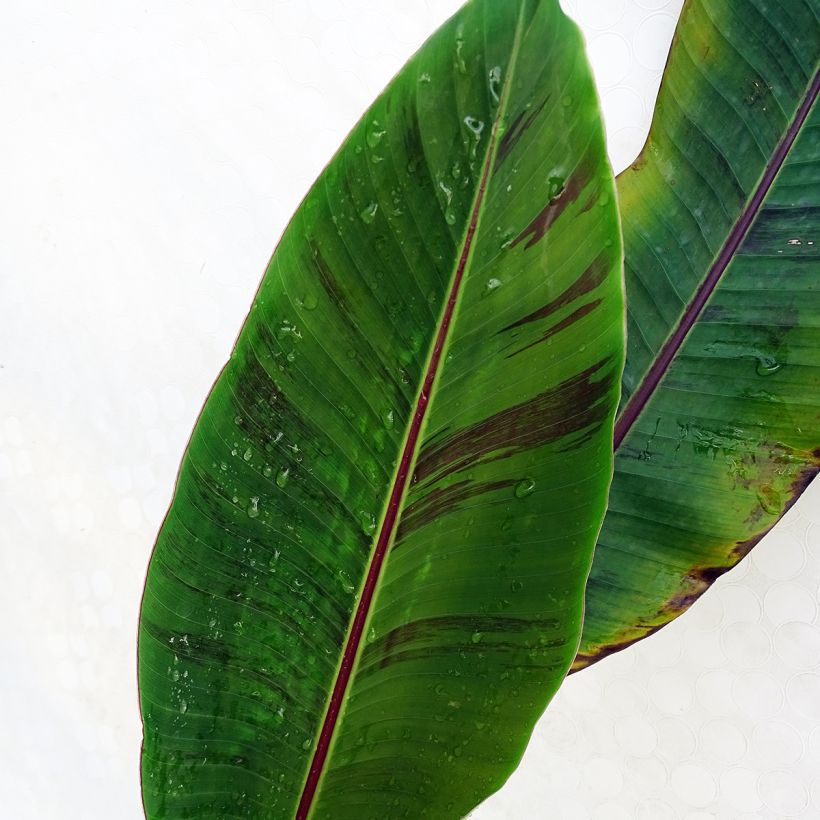

Plant habit
Flowering
Foliage
Botanical data
Musa
sikkimensis
Red Tiger
Musaceae
Darjeeling Banana, Sikkim Banana, Himalayan Banana Tree
Cultivar or hybrid
Other Musa - Banana tree
Planting and care
If you want to plant Musa sikkimensis, do it in spring or summer when the ground is tilled, rich in humus, and remains moist. Choose a sunny and sheltered spot so the wind doesn't harm the leaves. The plant grows on a slope in our exotic path. Before planting, soak the root ball in water for a few minutes. Dig a hole three times bigger than the root ball and put a layer of gravel at the bottom for drainage. Fill the hole with a mix of garden soil, compost or soil, and sand, then put the root ball and cover it with soil. Firmly pack the soil and water it generously.
During spring and summer, apply organic fertiliser regularly. Water the plant approximately 2-3 times a week in summer. Bugs or diseases do not easily attack the Banana tree.
In winter, prune the leaves along the trunk and protect the stump with a wire mesh filled with dead leaves along the pseudo-trunk. Cover the top with a winter cover to avoid too much moisture. The Himalayan Banana tree will grow from the base or the shoots formed around the base.
You can grow the plant in a pot, but remember that it can grow up to 4 metres (13 ft 1 in) in height for the Himalayan Banana tree. Repot it approximately every two years. Before the first frost, bring the pot inside to a bright, but not directly sunny, location. If necessary, mist the leaves or fill a saucer with damp clay pebbles, as the Banana tree, a tropical plant, prefers humid environments.
Planting period
Intended location
Care
-
, onOrder confirmed
Reply from on Promesse de fleurs
Striking foliage shrubs
Haven't found what you were looking for?
Hardiness is the lowest winter temperature a plant can endure without suffering serious damage or even dying. However, hardiness is affected by location (a sheltered area, such as a patio), protection (winter cover) and soil type (hardiness is improved by well-drained soil).

Photo Sharing Terms & Conditions
In order to encourage gardeners to interact and share their experiences, Promesse de fleurs offers various media enabling content to be uploaded onto its Site - in particular via the ‘Photo sharing’ module.
The User agrees to refrain from:
- Posting any content that is illegal, prejudicial, insulting, racist, inciteful to hatred, revisionist, contrary to public decency, that infringes on privacy or on the privacy rights of third parties, in particular the publicity rights of persons and goods, intellectual property rights, or the right to privacy.
- Submitting content on behalf of a third party;
- Impersonate the identity of a third party and/or publish any personal information about a third party;
In general, the User undertakes to refrain from any unethical behaviour.
All Content (in particular text, comments, files, images, photos, videos, creative works, etc.), which may be subject to property or intellectual property rights, image or other private rights, shall remain the property of the User, subject to the limited rights granted by the terms of the licence granted by Promesse de fleurs as stated below. Users are at liberty to publish or not to publish such Content on the Site, notably via the ‘Photo Sharing’ facility, and accept that this Content shall be made public and freely accessible, notably on the Internet.
Users further acknowledge, undertake to have ,and guarantee that they hold all necessary rights and permissions to publish such material on the Site, in particular with regard to the legislation in force pertaining to any privacy, property, intellectual property, image, or contractual rights, or rights of any other nature. By publishing such Content on the Site, Users acknowledge accepting full liability as publishers of the Content within the meaning of the law, and grant Promesse de fleurs, free of charge, an inclusive, worldwide licence for the said Content for the entire duration of its publication, including all reproduction, representation, up/downloading, displaying, performing, transmission, and storage rights.
Users also grant permission for their name to be linked to the Content and accept that this link may not always be made available.
By engaging in posting material, Users consent to their Content becoming automatically accessible on the Internet, in particular on other sites and/or blogs and/or web pages of the Promesse de fleurs site, including in particular social pages and the Promesse de fleurs catalogue.
Users may secure the removal of entrusted content free of charge by issuing a simple request via our contact form.
The flowering period indicated on our website applies to countries and regions located in USDA zone 8 (France, the United Kingdom, Ireland, the Netherlands, etc.)
It will vary according to where you live:
- In zones 9 to 10 (Italy, Spain, Greece, etc.), flowering will occur about 2 to 4 weeks earlier.
- In zones 6 to 7 (Germany, Poland, Slovenia, and lower mountainous regions), flowering will be delayed by 2 to 3 weeks.
- In zone 5 (Central Europe, Scandinavia), blooming will be delayed by 3 to 5 weeks.
In temperate climates, pruning of spring-flowering shrubs (forsythia, spireas, etc.) should be done just after flowering.
Pruning of summer-flowering shrubs (Indian Lilac, Perovskia, etc.) can be done in winter or spring.
In cold regions as well as with frost-sensitive plants, avoid pruning too early when severe frosts may still occur.
The planting period indicated on our website applies to countries and regions located in USDA zone 8 (France, United Kingdom, Ireland, Netherlands).
It will vary according to where you live:
- In Mediterranean zones (Marseille, Madrid, Milan, etc.), autumn and winter are the best planting periods.
- In continental zones (Strasbourg, Munich, Vienna, etc.), delay planting by 2 to 3 weeks in spring and bring it forward by 2 to 4 weeks in autumn.
- In mountainous regions (the Alps, Pyrenees, Carpathians, etc.), it is best to plant in late spring (May-June) or late summer (August-September).
The harvesting period indicated on our website applies to countries and regions in USDA zone 8 (France, England, Ireland, the Netherlands).
In colder areas (Scandinavia, Poland, Austria...) fruit and vegetable harvests are likely to be delayed by 3-4 weeks.
In warmer areas (Italy, Spain, Greece, etc.), harvesting will probably take place earlier, depending on weather conditions.
The sowing periods indicated on our website apply to countries and regions within USDA Zone 8 (France, UK, Ireland, Netherlands).
In colder areas (Scandinavia, Poland, Austria...), delay any outdoor sowing by 3-4 weeks, or sow under glass.
In warmer climes (Italy, Spain, Greece, etc.), bring outdoor sowing forward by a few weeks.

































